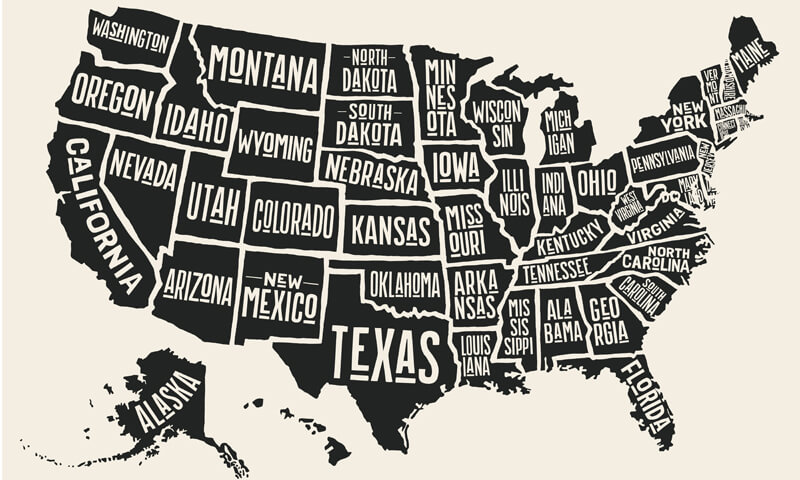Summary: Inside the world of New York salons, an ugly truth lurks below the surface—that workers are underpaid, if they are even paid at all; that they suffer from abuse; and that they do not even realize they are being taken advantage of by shop owners.
According to the New York Times, the manicure industry may be keeping some dark secrets. Just before 8:00 a.m. every day, young Asian and Hispanic women flood every street corner in Flushing, Queens. Old vans pull up to the curbs, and the manicurists climb inside. They are then transported to their nail salons in three separate states, where they will work 10- to 12-hour days.
Last May, Jing Ren, a 20-year-old who recently arrived in America from China, stood with the women for the first time. She was ready to start her job at a salon in a strip mall in Long Island. She had her lunch, a packet of nail tools that the manicurists are required to take to each job, and $100 in cash in her pocket.
The $100 was the fee the salon owner charged each new employee for her job. In fact, most manicurists in the New York area must work for no actual wages—just tips—until the boss decides the manicurist is good enough to begin earning an actual paycheck.
After three months, she would begin earning $30 per day. In some instances, that’s not even $3 per hour.
Women once treated the manicure and pedicure as a splurge, only for special occasions, but now, many women visit salons weekly to have their nails painted. Currently, there are over 17,000 salons in the United States. In New York City, the number has tripled over the last 15 years to 2,000.
The New York Times conducted interviews of over 150 nail salon workers and owners, and found that most workers are not even paid minimum wage, and in some cases, are not paid at all. Workers may be humiliated at times, including having their tips cut for minor mistakes, being watched on video at all times, and, at times, physical abuse. These employers are rarely punished for their behavior.
The Moritz College of Law is offering human trafficking awareness programs.
Newspapers written in Asian languages are filled with classified ads for manicurist jobs that pay so little that the wage appears to be a mistake. Ads in Sing Tao Daily and World Journal included a listing for NYC Nail Spa for a job that paid $10 per day. Several workers confirmed the pay rate.
Lawsuits filed in New York have complained about a history of abuse: some workers complained they were paid just $1.50 an hour for a 66-hour workweek; some were charged for water, even if they were not paid that day; some were kicked and verbally abused.
Last year, the New York State Labor Department, along with other agencies, conducted the first nail salon sweep ever. Twenty-nine salons were inspected and 116 wage violations were reported.
Of the over 100 workers that were interviewed, only about twenty-five percent said that they were paid the equivalent of New York’s minimum wage. All but three employees had wages withheld in ways that would be deemed illegal—such as never receiving overtime pay.
Although their days are spent pampering some of the most wealthy women in the state, the manicurists often live in flophouses with an abundance of bunk beds, or in apartments they share with eleven other individuals.
Ren worked at Bee Nails, a salon decorated with chandeliers in Hicksville, New York. Leather pedicure chairs include iPads on the arms so that patrons can browse the screens without smudging their freshly painted nails. The customers rarely spoke to Ren, whose name tag displayed a fake name: “Sherry.”
After working mostly in silence, Ren returned to sleep in a one-bedroom apartment she shared with her cousin, her cousin’s father, and three strangers. Beds were located in the living room. For privacy, shower curtains surrounded the beds. When the lights were turned on in the kitchen, cockroaches ran for cover.
In 2013, the FBI rescued over 100 sexually exploited children.
Most employees spoke little English, and many were here illegally—the combination makes them vulnerable to abuse.
Korean workers typically earn twice as much as their colleagues. Korean owners value them above Chinese workers, Hispanic workers, and non-Asian workers. Chinese workers are second in line in earning, with Hispanic and non-Asian workers at the bottom.
When you think about the cost of a manicure, the low pay is easy to understand: most salons only charge $10.50 for a manicure. Nationwide, the average is close to double this amount.
Nicole Hallett, a lecturer at Yale Law School who has worked on salon wage theft cases, said, “You can be assured, if you go to a place with rock-bottom prices, that chances are the workers’ wages are being stolen,” said Nicole Hallett, a lecturer at Yale Law School who has worked on wage theft cases in salons. “The costs are borne by the low-wage workers who are doing your nails.” According to Vox.com, if you have any reason to suspect that your local salon is engaging in these practices, you should call your state’s department of labor hotline immediately.
Some owners admitted that they were paying their workers very little. Ren’s boss, Liang Sheng Sun, who goes by Howard, said it was just how business was conducted, after initially denying anything was wrong. “Salons have different ways of conducting their business. We run our business our own way to keep our small business surviving.”
Many other owner said that giving manicurists a job was helping them. Roger Liu, a 28-year-old Chinese immigrant, owns a salon in Huntington Station, New York. “I want to change the first generation coming here and getting disgraced, and getting humiliated,” he said. When asked about an employee who was in her first week of employment, Liu said he was not paying her.
Since the manicurists must work many hours just to make ends meet, their lives are essentially centered around the salons. In many neighborhoods, women walk door to door, taking workers’ children to school for a fee. Many manicurists pay caregivers close to half their wages to have their children cared for.
Ren has started taking English classes, hoping to begin a new life. “I would feel petrified, thinking that I’ll be doing this for the rest of my life,” she said.
It is fairly easy to open a nail salon. It only costs a few thousand dollars to obtain pedicure chairs with whirlpool baths. Little English is required, and licensing is not difficult—many skip this step completely. Rent, nail polish, and low wages make up the bulk of the overhead expenses.
The largest human trafficking event is the Super Bowl.
It is difficult to say why the industry boomed in recent years, especially since many nail polish companies market their products directly to consumers. Manicure prices, however, have not changed much from the levels seen in the 1990s—and neither have wages.
To get started, most manicurists must pay $100 or $200 in cash for a “training fee.” Weeks, or even months, of unpaid work usually follows. Ren had worked for three months, painting toes, scrubbing calluses, and massaging feed before she was told she would be paid. She recalled, “I just burst into laughter unconsciously. I have been working for so long while making zero money; now finally my hard work paid off.”
Her cousins threw a party in her honor that night. The next payday, she found out she would earn less than $3 per hour.
In many salons, the manicurists are not paid for several weeks or months, and then earn a maximum of $30 to $40 dollars per day.
Under federal labor laws, nail salon workers are usually considered “tipped workers.” New York employers are typically permitted to pay these employees slightly less than the state’s $8.75 minimum hourly wage, based on a calculation of how much the worker earns in tips. However, many workers said that the tip calculation is essentially meaningless—none of them reported having received supplemental pay, which is required when the tips accrued during a day equal less than the minimum wage. Overtime pay is extremely rare, even when employees work 12 hours a day, sometimes 7 days per week.
Inside the salon, there are usually three ranks of workers. “Big Job” employees are veterans, and it is the most lucrative position. However, many manicurists avoid the position because of the potential for health issues—such as miscarriages and cancer—associated with the job requirements, such as sculpting fake nails out of acrylic. “Medium Job” workers do regular manicures, and “Little Job” employees include beginners, who clean hand towels and sweep nail clippings. They may also do pedicures.
More experienced workers may earn up to $80 per day. However, due to their long hours, their pay is still usually less than minimum wage. In poorer areas in the Bronx and Queens, workers are only paid a commission.
In most salons in New York, the workers are Chinese, Spanish, Tibetan, or Nepali. However, 70 to 80 percent of the salons in the city are owned by Koreans, and Korean manicurists, especially if they are attractive, may usually cherry-pick which jobs they want. Non-Korean manicurists typically get stuck with the less desirable positions in low-income areas. In fact, Korean employees usually earn 15 to 25 percent more than their non-Korean counterparts.
Some bosses take advantage of Hispanic manicurists, many of whom are often indebted to “coyotes” who smuggled them into the country. In fact, Mal Sung Noh, a 68 year old Korean salon owner, said that “Spanish employees” are just not as smart or as sanitary as Koreans. She keeps them at the bottom positions in her salon because “…they don’t want to learn more,” she said. Many manicurists do not want to serve male customers, so the non-Korean manicurists would be assigned to men that entered the store. In some instances, only Korean manicurists were even allowed to speak throughout the day.
When business slowed down at the end of 2013, Xue Sun, Ren’s cousin, had an idea. She took a bus down to Florida, which she knew was always warm. She figured that pedicures were a year-round necessity, and went from store to store until she found a job. She returned in the spring of 2014, and was upset to find her cousin shut up in their apartment.
When Ren first joined the group of girls waiting for the van to arrive, she was terrified. Her hands would shake as she performed pedicures—her hands even shook as she tried to practice on herself. She remembered, “I tried to calm down on my way back in the van — it’s a long trip and quiet. I told myself that I have to prove that I’m capable of conquering all these difficulties and make it.”
Over time, Ren grew more confident, and kept track of all of her expenses, since her salary was so low.
Nail salon owners are typically the success stories of their immigrant communities. Some were once manicurists themselves. When interviewed, many saw themselves as heroic, taking on the training of new employees and the risk of employing those who should not be working in the United States. Many said they felt betrayed when workers quit or sued the salon. One owner wrote in a request to dismiss a lawsuit against her salon, “They don’t stop to think how difficult it is nowadays to keep the door of our business open to service people.”
Ansik Nam, the former president of the Korean American Nail Salon Association, said that in the early 2000s, many owners held an emergency meeting in Flushing, hoping to prevent manicure and pedicure prices from decreasing further, but they could not reach an agreement. In one salon, the customers were encouraged to tip well. A sign read, “Less tips make us hard to hire good workers, or we have to pay higher wages to hire them, which might also cause a raise on the price.”
The owner’s wife said sales of the salon totaled over $400,000 per year, but that they had significant expenses, such as payroll and rent. Some of her new employees were not even paid $10 per day.
The owners of Iris Nails operate seven stores that generate sales of around $8 million per year—yet, according to their workers, the starting wages were $30 and $40 per day.
Salon owners may live lavish lifestyles, complete with art collections, fancy cars, and other expensive hobbies.
In those rare cases were salon owners were found guilty of wage theft, the salons were usually sold quickly—often, to the owners’ relatives. The original owners and their assets disappear, and owners claim they cannot pay back wages, and, since their records are unreliable, it is difficult to prove otherwise.
Although a landmark court award of over $474,000 was ordered in 2012 for underpayment by a salon named Babi, six manicurists involved in the lawsuit have received only a fraction of that amount. In Bae Kim, the salon’s owner, claimed that he did not have money to pay the back wages, but he sold his house for $1.13 million and a commercial property for $2 million right before the trial.
During the three months Ren worked without pay in her salon, she had no idea that it was illegal for her to work for free, or that the $30 per day she would eventually receive was also against the law. She was happy to have work at all, she said, since she was an immigrant. Plus, who would she complain to?
The Labor Department is the state agency in New York that is responsible for monitoring wage violations. The department typically opens just two or three dozen nail salon cases a year in the entire state, although there are more than 3,000 salons operating in the state. Most of these were launched due to worker complaints. Only a small number of workers confirmed that they had seen an investigator at their salon. Additionally, just 2 of the state’s 115 investigators speak Korean, which is essential for the investigations.
Of the 37 cases opened in 2014, close to one-third of them involved shops from Envy Nails, which is now facing a class action lawsuit from its workers. In 2011, a class action lawsuit was filed against a San Francisco salon chain for labor violations, New America Media reported.
In 80 percent of the investigations, the department finds that workers have been unpaid or underpaid, and attempts to recover money on their behalf.
During these investigations, many manicurists are reluctant to speak, more so than in any other industry. “They are totally running scared in this industry,” a Labor Department official said.
Even when agencies do check on their employers, it’s easy to escape—such as yelling for the unlicensed workers to run out the back door.
As for Ren, she asked her boss for a raise one day, only to find out that, for a raise, one must learn a new skill, such as eyebrow waxing or curing gel nail polish under an ultraviolet light. Learning a new skill would be another cash fee. Ren refused. “I already paid when I first came. Now I’m an employee and have been here for so long. Why do I still have to pay to pick up new skills?”
Ren ended up quitting on March 8. Her boss did not speak to her, and she received a solitary hug from a colleague. She had earned $10,000 in about ten months.
Last month, she found a new job in a salon—where she earns $65 per day.
Source: New York Times
Photo credit: New York Times

















































